Building an effective NLP application starts with defining a concrete use-case within a specific domain. No two companies are completely alike, and the same goes for business solutions. But this doesn’t mean that learnings from one project cannot be applied to another. With this in mind, we’ve collected case studies across nine different industries to illustrate the potential uses for natural language processing and text analytics.
Biotechnology
When someone calls into the Medical Information Department (MID) at Biogen, they’re routed to operators who search through FAQ’s, brochures, and product resources to answer questions. If the answer cannot be provided within a minute, the call escalates to an expensive medical director. Biogen wanted to reduce the involvement of these directors. So, they turned to InMoment for a solution to empower, not replace, their human operators. 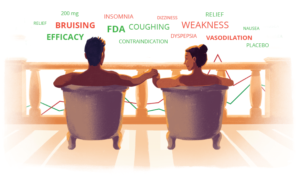
First, we configured our core NLP to identify relevant information within Biogen’s resources. Then, we combined this solution with an open-source search engine and custom user interface. The resulting system understands complex relationships within Biogen’s data. Now, MID operators can now type in keywords or questions to get answers in seconds. Early testing by Biogen already shows faster responses and fewer calls sent to medical directors.
[perfectpullquote align=”full” bordertop=”false” cite=”” link=”” color=”” class=”” size=””]“We’ve worked with InMoment for years on programs surrounding Voice of the Patient, Voice of the Key Opinion Leader (KoL), and social media monitoring… They’ve always been a key partner.” — Keith Ho Director of Customer Focus and Medical Digital, Biogen[/perfectpullquote]
Sports & Entertainment
Brandtix delivers actionable brand performance insight for the world’s top athletes and teams by gathering data from social media and news platforms. They turned to InMoment for a powerful NLP platform that could analyze and decode the jargon-filled language of professional sports. Together, Semantria API and Brandtix’s proprietary algorithms now process fan vernacular across 19 languages. As part of this, Semantria analyzes and structures the sentiment of fan conversations as positive or negative, based on context. These capabilities allow  franchise owners, player agents, and PR teams to separate meaningful mentions from general chatter and address PR problems before they get out of hand.
franchise owners, player agents, and PR teams to separate meaningful mentions from general chatter and address PR problems before they get out of hand.
[perfectpullquote align=”full” bordertop=”false” cite=”” link=”” color=”” class=”” size=””]“Choosing InMoment over its competitors was easy — thanks to the mix of service, price, ease of use, and language packs. Further, InMoment counts extraction and sentiment analysis as one action. The other solutions we looked at bill extraction and sentiment separately, charging double the volume and double the price.” — Shahar Fogel Vice President of Product, Brandtix[/perfectpullquote]
Social Media Monitoring
evolve24 is a data analytics firm that combines myriad data sources to help companies develop strategic direction. To process information and provide market intelligence in real-time, evolve24 can only employ best-in-class toolsets with the lowest possible latency and downtime. Salience, a core AI-based NLP engine, provides low-latency text analytics that processes five or more tweets every second, expediting evolve24’s time-to-value for their customers. Salience’s power and customizability give evolve24 the ability to keep up with increasing volumes while helping them maintain high standards of consistency and measurement across a range of text data sources.
[perfectpullquote align=”full” bordertop=”false” cite=”” link=”” color=”” class=”” size=””]“The text analytics engine is a key tool for us in conjunction with our proprietary emotion metric; this next evolution of functionality promises an even more comprehensive look into the conversations our customers’ customers are having.” — Noah Krusell VP of Product Development, evolve24[/perfectpullquote]
Customer Experience Management
VOZIQ offers a suite of Predictive Customer Retention and Customer Experience Management solutions for call centers. Traditional churn prediction models rely on transaction histories and demographics data but fail to incorporate consumer-generated input with real customer sentiment. VOZIQ turned to InMoment to fill this gap. 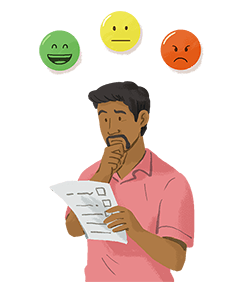
Through Semantria, VOZIQ categorizes the text comments and identifies customer sentiment from survey scores and keywords in each call log. Since partnering with InMoment, VOZIQ has retained thousands of customers for their clients, resulting in millions of dollars in additional revenue each year.
Industrial & Aviation Design
Gensler’s Los Angeles Aviation and Transportation Studio partnered with InMoment, leveraging sentiment analysis on customer feedback to make better-informed decisions about the planning and design of airports. The result is a data-driven voice of customer program that can help win contracts and build airports that better serve stakeholders and travelers alike.
[perfectpullquote align=”full” bordertop=”false” cite=”” link=”” color=”” class=”” size=””]“As a global industry leader in airport architecture, we utilize the power of Semantria’s rapid and precise data analysis to create better-informed designs for the airports of tomorrow.” — Andy Huang, AIA LEED Associate Designer, Gensler Aviation and Transportation Studio[/perfectpullquote]
Hospitality & Hotel Management
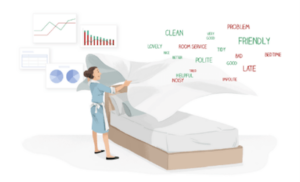 Revinate helps over 30,000 hospitality providers measure online presence, analyze consumer feedback, and reinvent the guest experience. With over 2,700 categories, 100 restaurant topics, 200 hotel topics, and nine languages, Revinate gives their customers the ability to measure consumer sentiment in critical categories, such as rooms, staff, service, and food. Semantria’s customizability lets Revinate’s users create lists of custom topics, follow trending topics as they evolve, and compare sentiment scores across multiple organization-specific metrics.
Revinate helps over 30,000 hospitality providers measure online presence, analyze consumer feedback, and reinvent the guest experience. With over 2,700 categories, 100 restaurant topics, 200 hotel topics, and nine languages, Revinate gives their customers the ability to measure consumer sentiment in critical categories, such as rooms, staff, service, and food. Semantria’s customizability lets Revinate’s users create lists of custom topics, follow trending topics as they evolve, and compare sentiment scores across multiple organization-specific metrics.
[perfectpullquote align=”full” bordertop=”false” cite=”” link=”” color=”” class=”” size=””]“The support from the team at InMoment was outstanding; they made a very complex project seem simple. With their partnership, we met our goals on time, delivered the best possible product, and were set up to ensure continued success.” — Matt Zarem, Senior Director of Product, Revinate[/perfectpullquote]
Technology & Electronics
A large tech company’s Customer Market Research (CMR) team helps managers across the company make better decisions regarding product and market strategy. Before, the CMR team used to listen to the Voice of the Customer by designing, distributing, and analyzing a wide range of surveys. As the group began working to integrate social media data, they turned to InMoment.
Their team needed to effectively filter social content in order to extract relevant data, reduce survey spend, easily configure flexible one-off analyses, and validate long-term trends. Traditional social listening tools didn’t offer the customizability and scalability that the CMR team needed, so they contacted InMoment to discuss a “semi-custom” solution.
First, the CMR team extracts a subset of social comments from a InMoment-built data warehouse, based on the products and brands they want to know more about. Then they use Spotlight to analyze this data and understand what people are saying, how they feel, and why they feel that way. Next, they validate the results and relate the net sentiment score to quantitative Likert™ Scale survey data. This approach allows them to compare and contrast what people say in structured surveys, versus what they say in the unstructured environment of social media.
[perfectpullquote align=”full” bordertop=”false” cite=”” link=”” color=”” class=”” size=””]“InMoment is the only vendor we’ve seen that can offer the flexibility that is required to support our complex product line.” — Csaba Dancshazy Senior Market Research Manager [/perfectpullquote]
Fitness Lifestyle & Events
Tough Mudder Inc. has grown to become a leading active lifestyle brand and endurance event company with more than 2.5 million global participants. The Net 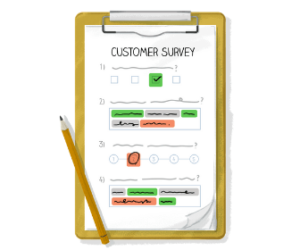 Promoter Score (NPS) is an essential measurement for the company. However, the volume and the qualitative format of their post-event surveys make it challenging to garner insight.
Promoter Score (NPS) is an essential measurement for the company. However, the volume and the qualitative format of their post-event surveys make it challenging to garner insight.
Using Semantria for Excel, the Tough Mudder team reduced manual survey coding time by 90%. Working with InMoment staff, they designed custom queries to solve an industry-specific sentiment analysis problem. In total, Tough Mudder uses InMoment to process 2,000 surveys for each of the company’s 78 events per season, some 156,000 surveys total.
[perfectpullquote align=”full” bordertop=”false” cite=”” link=”” color=”” class=”” size=””]“By teaming with InMoment, Tough Mudder is able to report Net Promoter Scores and review participant feedback within a week of every event. The company’s ability to make strategic adjustments based on customer insights is invaluable to providing the ultimate event experience.” — Sydney Friedkin Consumer Insights Analyst, Tough Mudder Inc.[/perfectpullquote]
Regulatory Compliance & Financial Services
The Australian government mandates that financial Statements of Advice (SoAs) include disclosures covering conflicts of interest, own product recommendations, and more. Financial services providers doing business in Australia use SoA templates and frequent spot-checks. This helps make sure that financial advisors aren’t modifying or deleting critical disclosures.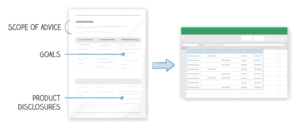
An average-sized firm produces hundreds of pages of SoAs each week. Manual review is costly, unreliable, and exposes the firm to high non-compliance risk. One such firm, unable to find an existing contract analysis tool that could solve this exact problem, turned to InMoment for help. First, we trained our semi-structured data parser with machine learning to understand the underlying structure of the Statement of Advice document. Then, we built a custom natural language processing configuration to extract and analyze entities and other text elements. Then, we structured and exported the resulting data into a simple spreadsheet.
Now, in mere minutes the firm’s auditors can see whether proper disclosures were made across hundreds of documents. They can even identify where an advisor’s recommendations may go against their client’s stated goals and risk attitude. This substantially lowers the firm’s non-compliance risk even while reducing their disclosure compliance costs.
Deploying NLP in Your Business
All of the NLP applications above show how text analytics/NLP can help companies increase revenue and reduce costs. But can a natural language processing application solve your business problems?
Start by answering these questions:
- What’s your need?
- What’s your desired outcome?
- Do you have enough data?
- Do you have the right data?
- Does the technology exist?
- Can you build it?
- Is there an established vendor you can work with?
- How will you measure your outcome?
Your answers will help you figure out the best way towards solving your own business problems in a cost-effective way. Often this comes down to a question of Build vs Buy. In many (most) cases, it will make more sense to partner with a reliable NLP vendor – so long as you do your homework.
The truth is that many companies flaunt shiny AI systems that promise to solve all the world’s problems. But while moon-shot projects certainly are admirable, the nature of those projects often doom them to failure from the outset. And in the end, business users are not angel investors. They need real applications that deliver results today, not years in the future.
We can’t stress this enough: Everything comes down to how applicable an NLP solution is to your business. Whether you’re in hospitality, entertainment, financial services or any other text data heavy industry, natural language and text analytics can be utilized to unlock value. If you see potential for NLP within your  organization, then the next step is to reach out to a vendor. If you speak with InMoment, we’ll start by sitting down with you to understand precisely what you’re trying to achieve, the context you’re working in, and why other providers don’t meet your needs.
organization, then the next step is to reach out to a vendor. If you speak with InMoment, we’ll start by sitting down with you to understand precisely what you’re trying to achieve, the context you’re working in, and why other providers don’t meet your needs.










 franchise owners, player agents, and PR teams to separate meaningful mentions from general chatter and address PR problems before they get out of hand.
franchise owners, player agents, and PR teams to separate meaningful mentions from general chatter and address PR problems before they get out of hand.

 Promoter Score (NPS) is an essential measurement for the company. However, the volume and the qualitative format of their post-event surveys make it challenging to garner insight.
Promoter Score (NPS) is an essential measurement for the company. However, the volume and the qualitative format of their post-event surveys make it challenging to garner insight.

 organization, then the next step is to reach out to a vendor. If you speak with InMoment, we’ll start by sitting down with you to understand precisely what you’re trying to achieve, the context you’re working in, and why other providers don’t meet your needs.
organization, then the next step is to reach out to a vendor. If you speak with InMoment, we’ll start by sitting down with you to understand precisely what you’re trying to achieve, the context you’re working in, and why other providers don’t meet your needs.

